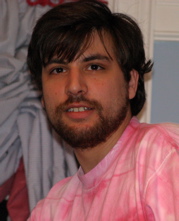by Ben Meltzer
I attended my first concert, Harry Chapin, at age 3. This was on March 24, 1977 at Painters Mill Music Fair in Owings Mills, Maryland. 14 years later, at the same venue, I saw my first of some 35 Bob Dylan concerts. I was a big concertgoer who wore earplugs only sporadically.
I had a great deal of additional noise exposure in an office where my colleagues and I were subjected to routine fire alarm testing during working hours. And for several weeks, I sat near a squealing printer that ran continuously.
In early 2007, I started feeling fullness in my left ear. Over the next nine months, it worsened. I experienced my first bout of fleeting tinnitus or SBUTT: sudden brief unilateral tapering tinnitus.
An ENT told me aural fullness is a common symptom of temporomandibular joint disorder, or TMJ, so I visited my dentist, who made me a mouthguard. It made my symptoms worse.
Two weeks later, I awoke to find ordinary sounds were painfully loud. The honk of a car horn was excruciating, as was the roar of a lawnmower.
More debilitating than this knifelike pain from sound, however, was a constant burning pain in the ears that existed independent of sound. This symptom confounded the audiologist and ear doctors I saw.
The loudness discomfort test I took at a prominent hospital indicated severe hyperacusis, but the audiologist there said she had never encountered a patient with constant ear pain. The institution’s inexperience with my symptoms unnerved me.
Over the next two years–with time, quiet, and ear protection–I slowly improved. Then, two big noise insults in the same week proved catastrophic. At the dentist, with a dental drill whirring to my right, I felt something break in my right ear. A few days later, I was near the fire station when an air-raid siren blasted, loud enough to alert the whole town’s firefighters.
From then on, my symptoms of noise trauma―aural fullness, tinnitus, hyperacusis, and burning pain―intensified. The trauma turned my right ear red and veiny, and it became sensitive to wind and cold. When my hair grows longer, I feel it on my right ear more acutely than on my left. So I now have a “good ear” and a “bad ear,” with similar symptoms that differ in severity.
Worst of all, the right ear could no longer tolerate an earplug or being covered with a protective earmuff. I get severe pain from merely covering the ear. This symptom has mitigated slightly. I can now–more than 10 years post-injury–wear earmuffs for around 5 minutes on a good day and still not at all on a bad one. Sometimes I feel as though there’s a lit match inside my ear.
A noise injury worsens readily. For hyperacusis sufferers such as myself, quiet makes the condition better; noise makes it worse. Among sufferers this is indisputable, but medical practitioners bizarrely treat quiet as harmful. Too often they think the patient’s chief concern is hearing loss, rather than an intolerable perception of sound.
Two nonprofits currently researching noise-induced pain and pushing the field forward are Hyperacusis Research and Hearing Health Foundation. New discoveries, with scientific tools and techniques only recently available, show that noise is far more destructive than previously believed.
I plan to donate my ears to the Temporal Bone Registry so that researchers will be able to examine them after my death to better understand hyperacusis, relieve it, and put an end to the misery endured by those like me.
Ben Meltzer is from Baltimore and now lives with his wife in New York.



